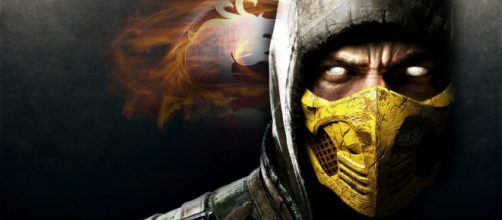In a debate concerning which fighting game franchise is the best, it's downright impossible not to include Mortal Kombat. Although other franchises could easily take the top spot, MK set the bar by crossing the line with its virtual violence. The franchise practically sits on the throne because its line of video games has successfully simulated a visceral blood sport with no limits and is complete with virtual murder in the form of "fatalities," the most controversial final blow ever performed in a fighting game.
Mortal Kombat truly defined its own success with that one.
However, the franchise has faced many threats to its existence along the way. The most dangerous threat wasn't a concerned Congress trying to ban violent video games. Surprisingly, it was its own developers who nearly destroyed the franchise by adding certain lackluster features to its entries. Here are the Top 5 listed below:
5. Palette swaps
One of the lamest things about the earlier Mortal Kombat titles was the palette swapping trick designers used for the Lin Kuei Ninja characters (Sub-Zero, Skorpion, Reptile, Mileena, Kitana, Jade, etc). Instead of giving these characters different outfits and physiques for their designs, they were given only color schemes. And the only thing separating them were move sets and poses.
What's worse is that this pathetic trick was repeated throughout the series until Mortal Kombat 4. It was at this point that the series had moved away from 2D sprites to 3D modeling.
4. Babalities and Friendships
The first Mortal Kombat made a name for itself with the introduction of deadly finishing moves, aka "fatalities," and was a staple of the series that created not only a growing fan base but also a monopoly of sorts. But when the sequels Mortal Kombat II and Mortal Kombat 3 came out, the video games horrified fans with the introduction of a couple of "less than lethal" ways to punish an opponent, in the form of babalities and animalities, respectively. Babalities would turn the losers into adorable babies while friendships would make the winners perform comical gestures of peace.
Though fatalities were still available, it seemed the franchise was losing its edge whereas these new finishers were obvious acts of mercy, something these titles never really stood for. Sadly, Mortal Kombat II was not the last we saw of these non-lethal finishers as they would return in the sequels; MK3, MK3: Ultimate, MK: Trilogy and MK9.
3. Animalities (Mortal Kombat 3)
If the introduction of mercy wasn't a turning point for the violence in Mortal Kombat, then animalities were. These finishers which debuted in MK3 introduced a new type of violence by transforming the winning characters into carnivorous animals that would attack and maul their fallen opponents.
What's ironic is that despite animalities being as violent as fatalities, there were a couple problems that made them lame in nature.
Firstly, the character transformations resulted in animals whose bodies were completely starched in color, like they were manifestations constructed from a power ring. And secondly, the deaths at the hands of the animalities were also lame due to their ridiculous results.
For example, Sheva's transformation as a giant spider resulted in the opponent exploding in chunks from a spicy venomous bite. Overall, animalities took the already over-the-top violence of Mortal Kombat beyond its appeal and the damage was done.
2. Chain combos (Mortal Kombat 3 - Trilogy)
The combo system in the Mortal Kombat series has come a long way. In the series' current title MKX, chain combos are at their most robust; allowing for both basics and creativity when performing them.
But in the beginning, the combos were not so robust. When introduced in MK3, chain combos were very hard to perform. Chaining buttons required both blinding speed and timing. If they were not done correctly, a player's character would either be left wide open to an attack or jabbing repeatedly from the button mashing. The system was frustrating and was unfortunately carried over to other sequels until MK4 broke away from the mold by ushering a revamped system.
1. Sidestepping
Initially, Mortal Kombat was a 2D fighting game series similar to Street Fighter, King of Fighters, and others. But the arrival of MK4 would mark the first time the series was playable in full 3D. The new dimension brought many enhancements to the carnage especially sidestepping for dodging attacks more easily in combat.
However, after playing with this feature, players found that it made dodging attacks, in a Mortal Kombat game, too easy and less challenging.
Truthfully, diehard players preferred the 2D games over the 3D video games because dodging attacks on the former's plain was a true test of skill. It was obvious that sidestepping wasn't favored everyone but the developers chose to use it in the sequels that followed up until it was finally dropped in MK9; a game that paid homage to the traditional Mortal Kombat titles.


